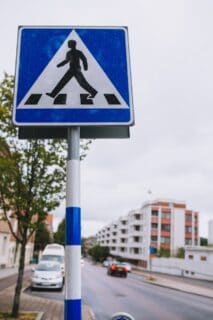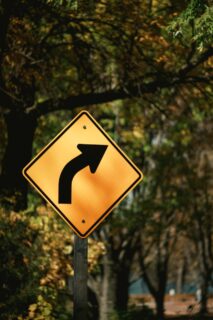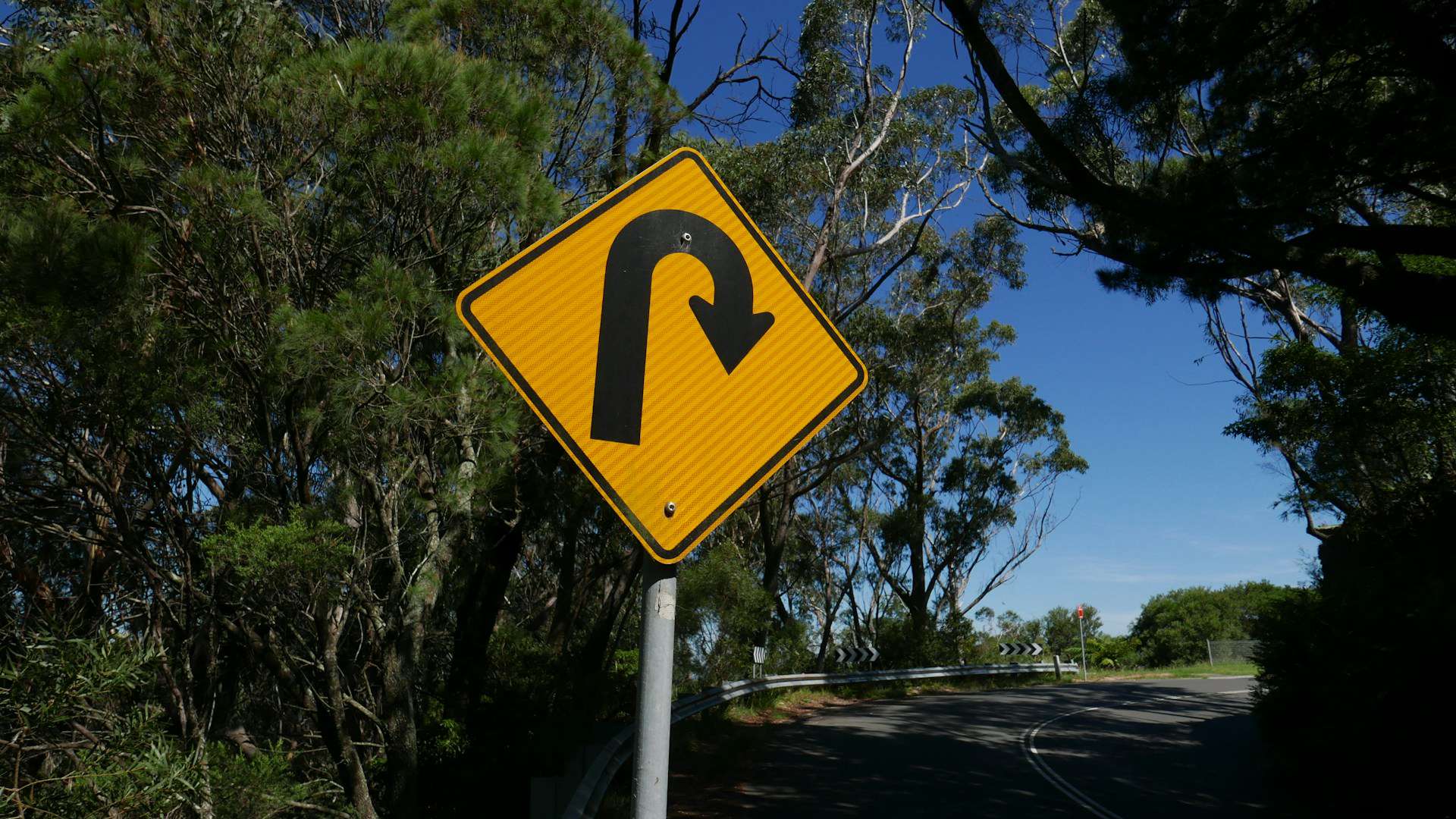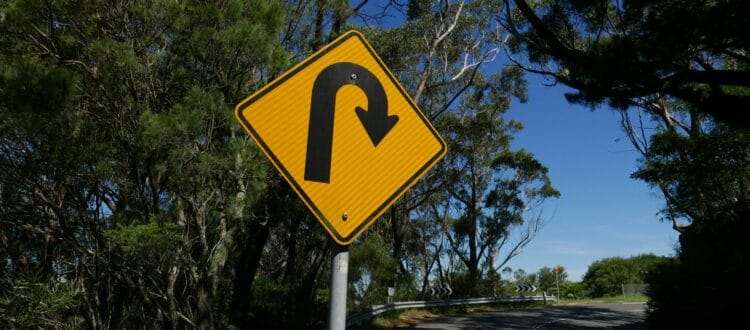Warning traffic signs are an essential component of road safety, serving as a proactive communication tool to alert drivers and pedestrians about potential hazards ahead. These signs are designed to capture attention and convey critical information, such as sharp curves, pedestrian crossings, animal crossings, and other potential dangers.
By providing advance notice of these hazards, they play a crucial role in preventing accidents and ensuring the safety of all road users. Understanding the significance and meaning of these signs is fundamental for promoting responsible and defensive driving, ultimately contributing to safer and more efficient driving conditions for the majority of drivers.
What Material are Warning Traffic Signs Made of?
 Warning traffic signs are made of highly durable and weather-resistant materials to ensure longevity and visibility. The most common material used for these signs is aluminum, which offers excellent corrosion resistance and can withstand harsh outdoor conditions. The signs are covered with reflective sheeting to enhance visibility, especially during low-light conditions or at night.
Warning traffic signs are made of highly durable and weather-resistant materials to ensure longevity and visibility. The most common material used for these signs is aluminum, which offers excellent corrosion resistance and can withstand harsh outdoor conditions. The signs are covered with reflective sheeting to enhance visibility, especially during low-light conditions or at night.
Also, some warning signs may be constructed using fiberglass or PVC (vinyl), providing flexibility and resistance to impact. Vinyl signs are used mainly in road construction areas and are often moved daily. Regardless of the material used, warning traffic signs are engineered to withstand the elements and maintain their effectiveness in alerting road users to potential hazards.
Are Warning Traffic Signs MUTCD-Compliant?
Warning traffic signs in the United States are required to comply with the guidelines set forth by the FWHA – Federal Highway Administration’s – Manual on Uniform Traffic Control Devices (MUTCD). The MUTCD establishes the standards for traffic control devices, including warning signs, to ensure uniformity and consistency across the nation’s roadways.
Adhering to MUTCD standards is crucial for the effectiveness and legal compliance of warning traffic signs, as it ensures that the signs are designed, installed, and maintained in a manner that maximizes safety and minimizes confusion for road users. By following MUTCD guidelines, warning traffic signs can effectively communicate potential hazards, contributing to a safer and more organized transportation system.
Color and Shape
Warning traffic signs use different colors to convey specific messages to motorists. Here is a list of the colors commonly used in warning traffic signs and their meanings:
 1. Yellow: Yellow signs indicate a general warning or caution that is not temporary. These signs are typically diamond-shaped with a yellow background and a black border. They warn drivers about potential hazards, obstacles, or conditions requiring special attention. Examples include two-way traffic, pedestrian crossings, merging lanes, and cattle crossings.
1. Yellow: Yellow signs indicate a general warning or caution that is not temporary. These signs are typically diamond-shaped with a yellow background and a black border. They warn drivers about potential hazards, obstacles, or conditions requiring special attention. Examples include two-way traffic, pedestrian crossings, merging lanes, and cattle crossings.
2. Orange: Orange signs are used for warning and guidance in roadway work zones. These signs alert drivers to construction, maintenance, or utility areas where workers or equipment may be present. They are typically diamond-shaped with an orange background and black lettering.
3. Fluorescent Yellow/Green: Fluorescent yellow/green signs are used to indicate pedestrian crossings and school zones. These signs are designed to enhance visibility and promote safety in areas where pedestrians are likely to be present.
4. Black and Yellow: Some warning signs have a black background and a yellow border. These signs often indicate specific hazards or conditions that require attention, such as a black diamond-shaped sign with a yellow border indicating a specific warning.
It’s important to note that the color and design may vary slightly depending on the country or region. However, these colors generally convey similar meanings across different locations, helping drivers anticipate and respond to potential hazards on the road.
Warning Traffic Sign shapes are carefully selected and standardized to effectively communicate specific warnings and ensure that drivers can quickly recognize and respond to potential hazards on the road.
 1. Diamond: Diamond-shaped warning traffic signs typically indicate potential hazards, dangers, or conditions that require caution. These signs serve as an alert to drivers, warning them to be prepared for specific road conditions or obstacles ahead, such as curves, intersections, pedestrian crossings, and slippery roadways.
1. Diamond: Diamond-shaped warning traffic signs typically indicate potential hazards, dangers, or conditions that require caution. These signs serve as an alert to drivers, warning them to be prepared for specific road conditions or obstacles ahead, such as curves, intersections, pedestrian crossings, and slippery roadways.
2. Rectangular with a Diagonal Stripe: Rectangular signs with a diagonal stripe indicate specific regulations or road conditions that require special attention. For example, a rectangular sign with a diagonal stripe might warn of a narrow bridge, a low clearance, or a steep descent.
3. Pentagon: Warning signs in the shape of a pentagon are used to alert drivers to school zones or school crossings. These signs serve as a reminder to reduce speed and exercise caution in areas where children may be present.
4. Round: Some warning signs are round with a black symbol on a yellow background. These signs typically convey railway crossing warnings, indicating the presence of railroad tracks and the need to be vigilant for approaching trains.
5. Triangular: Triangular warning signs are often used to alert drivers to potential hazards on the road, such as sharp turns, merges, or intersections. These signs are designed to capture attention and prompt drivers to adjust their speed and be prepared for the upcoming road conditions.
Examples of Warning Traffic Signs
1. Sharp Curve Warning Sign: This yellow diamond-shaped sign features an arrow curving to the left or right, alerting drivers to an upcoming sharp curve in the road.
2. Pedestrian Crossing Sign: A yellow diamond-shaped sign with a pedestrian symbol indicates a designated area where pedestrians may be crossing the roadway.
 3. Slippery When Wet Sign: This warning sign, often diamond-shaped, features wavy lines to depict a slippery road surface, cautioning drivers to be aware of reduced traction in wet or icy conditions.
3. Slippery When Wet Sign: This warning sign, often diamond-shaped, features wavy lines to depict a slippery road surface, cautioning drivers to be aware of reduced traction in wet or icy conditions.
4. Traffic Signal Ahead Sign: A yellow diamond-shaped sign with a traffic signal icon warns drivers of an upcoming traffic signal, prompting them to prepare for a potential stop.
5. Merging Traffic Sign: This sign, often diamond-shaped, depicts two lanes merging into one, alerting drivers to anticipate merging vehicles from the adjacent lane.
6. Deer Crossing Sign: A yellow diamond-shaped sign with a leaping deer symbol alerts drivers to the potential presence of deer on or near the roadway, especially in rural or wooded areas.
7. Low Clearance Sign: A rectangular sign with a diagonal stripe indicates a low clearance ahead, warning drivers of limited overhead space, such as on bridges or underpasses.
These examples represent a variety of warning traffic signs designed to communicate specific hazards or conditions on the road, helping to promote safe driving and awareness among motorists.
How are Warning Traffic Signs Regulated?
They are regulated through a combination of federal, state, and local authorities in the United States. The Federal Highway Administration (FHWA) plays a significant role in establishing and maintaining standards for traffic control devices, including warning signs, through the Manual on Uniform Traffic Control Devices (MUTCD). The MUTCD provides guidelines and requirements for the design, placement, and maintenance of warning traffic signs to ensure consistency and effectiveness across the country’s roadways.
State and local transportation agencies are responsible for implementing and enforcing these regulations, often incorporating additional specifications tailored to local traffic conditions and needs. Regular inspections, maintenance, and periodic updates are essential to ensure that warning traffic signs comply with regulations and remain visible, legible, and effective in communicating potential hazards to drivers. Compliance with these regulations is crucial to promoting road safety and minimizing risks for all road users.
How Durable are Warning Traffic Signs?
 They are designed to be highly durable and resistant to various environmental conditions to ensure their effectiveness and longevity. These signs are typically constructed using durable materials such as aluminum, steel, or high-density plastics, which can withstand exposure to sunlight, moisture, and temperature fluctuations. Reflective sheeting is used to enhance visibility, making the signs easily discernible in both daytime and nighttime conditions.
They are designed to be highly durable and resistant to various environmental conditions to ensure their effectiveness and longevity. These signs are typically constructed using durable materials such as aluminum, steel, or high-density plastics, which can withstand exposure to sunlight, moisture, and temperature fluctuations. Reflective sheeting is used to enhance visibility, making the signs easily discernible in both daytime and nighttime conditions.
Also, they are engineered to resist corrosion (alodized or anodized), fading, and damage from impact, ensuring that they remain legible and functional for an extended period. Proper installation and regular maintenance further contribute to the durability of warning traffic signs, allowing them to effectively convey critical information to motorists while driving.
Conclusion
Warning traffic signs are an essential component of road safety, effectively communicating potential hazards, conditions, and regulations to drivers. Through standardized shapes, colors, and symbols, these signs provide vital information that enables motorists to anticipate and respond to specific road conditions, ultimately reducing the risk of accidents and promoting safe navigation. Regulated by federal, state, and local authorities, they are designed to be durable, highly visible, and resistant to environmental factors, ensuring their effectiveness over time. As a fundamental element of traffic control, they play a pivotal role in guiding and informing drivers, contributing to the collective effort to create safer and more efficient roadways for all users.
Popular Posts:




